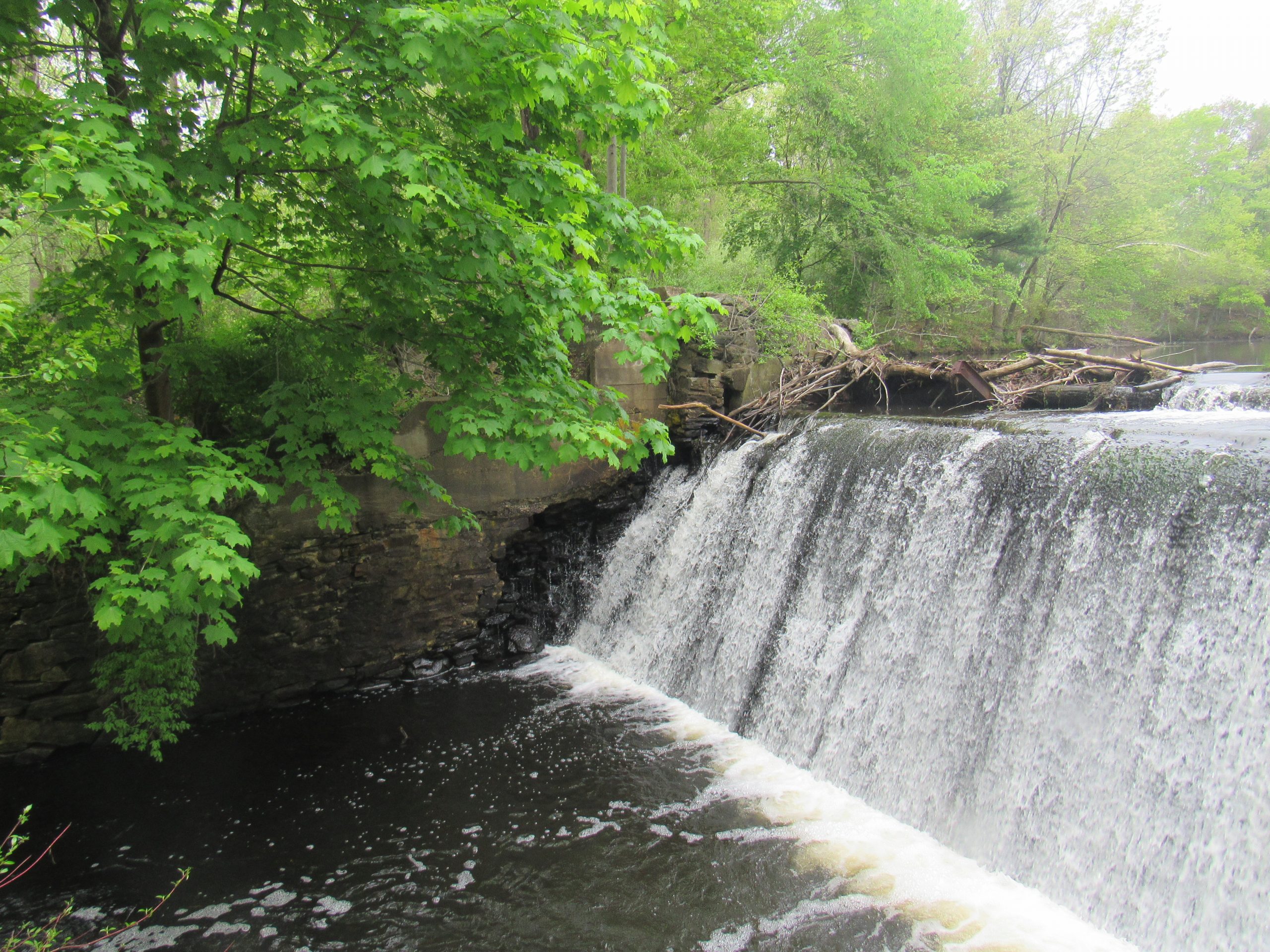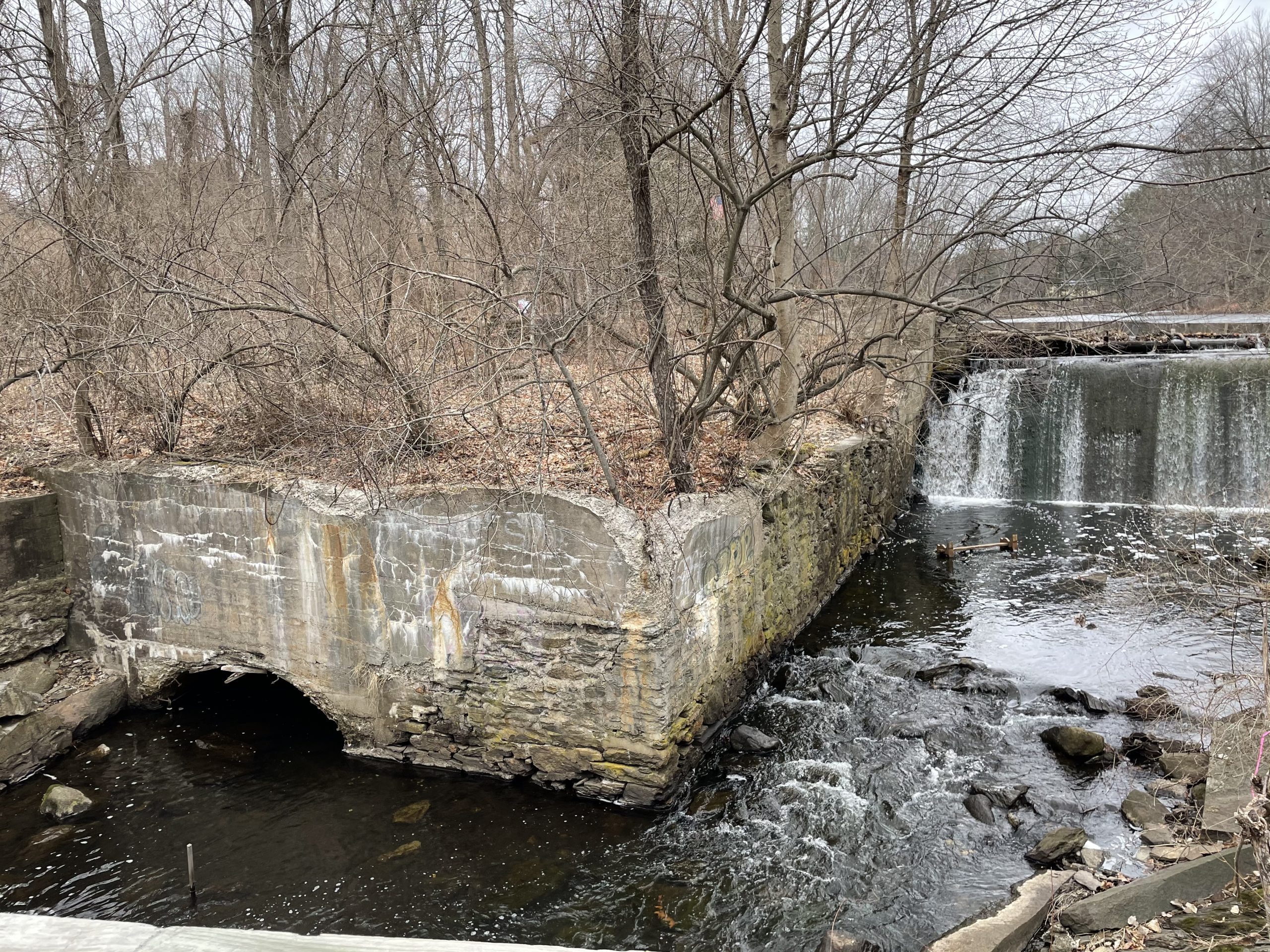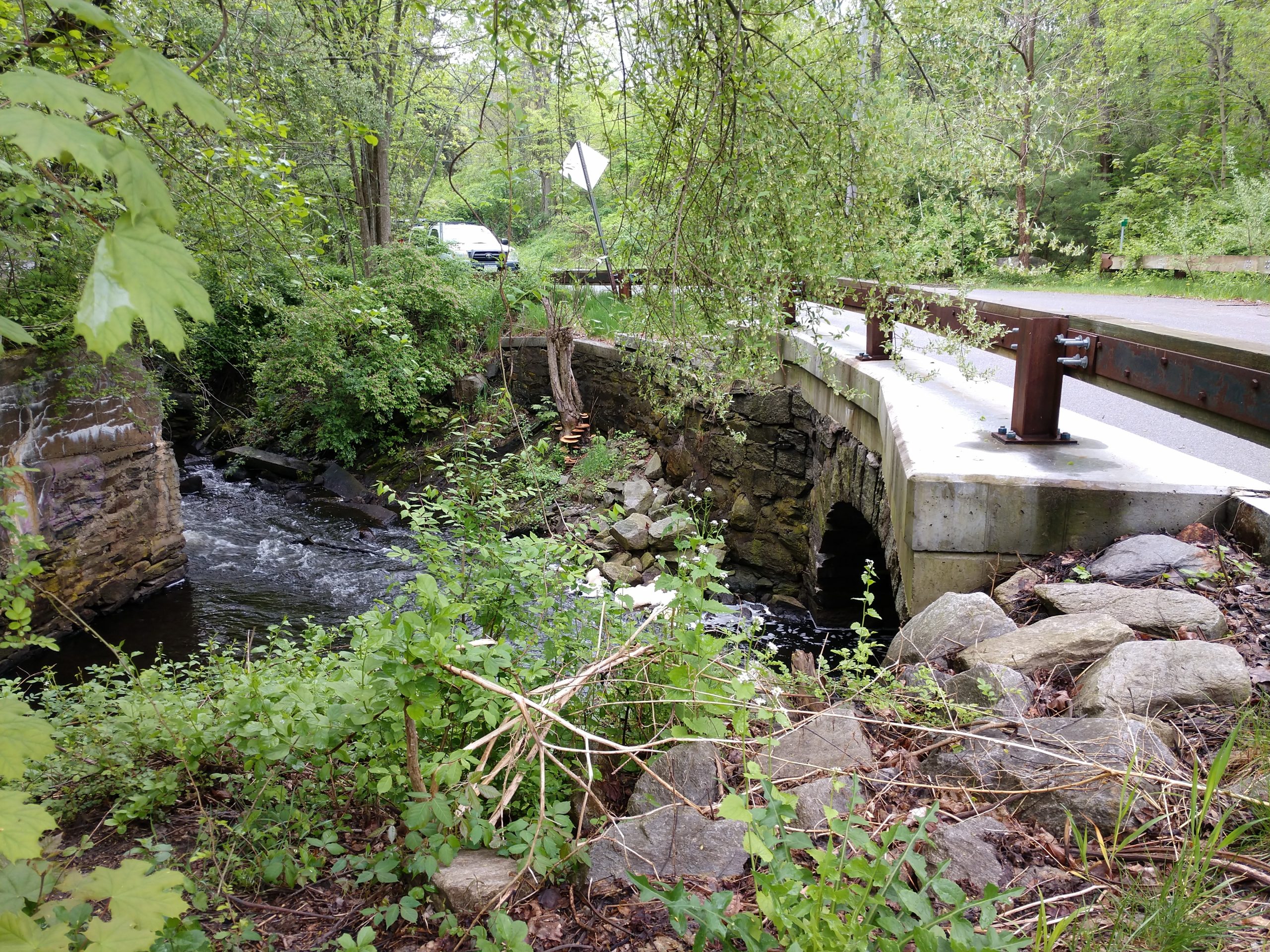The David N. Taft-Huguenot Mill, manufacturer of satinets, was depicted at Lowes Pond Dam. The main buildings were used for weaving, spinning, carding, and finishing. A dye house was located over the river, downstream of the dam. Dwellings, which were probably housing for the mill, were depicted on the south side of Huguenot Road. A water main was depicted on Huguenot Road, coming from Main Street. A note on the Sanborn Map indicated that the mill was supplied by Town water.
About
The mill buildings at the Lowes Pond Dam site were demolished in the 1970s. Today only the dam, abandoned water wheel sluiceway, and remnants of the foundation walls remain.
Lowes Pond Dam is a combined earthen embankment, stone masonry, and concrete structure. The structure consists of an earthen embankment section, a stone masonry and concrete sluiceway channel structure, a stone masonry and concrete principal spillway section, and an earthen embankment on the left. The spillway section of the dam acts as the primary outlet of the structure, and the sluiceway channel has uncontrolled flow through its outlet. The dam has a maximum structural height of 15.6 ft. and a maximum storage capacity of 188 acre-feet. In accordance with the dam safety regulations, the dam is an intermediate size structure based on both height and storage and is classified as a Significant Hazard Potential. Failure of the dam may cause damage to downstream bridges and culverts.


DCR engaged the services of AECOM to conduct a visual structural and geotechnical condition assessment of Lowes Pond Dam. The results of the 2020 study determined that the existing dam infrastructure exhibits extensive physical deterioration and seepage, which affects the ability of the dam to safely impound water. The site conditions also present tripping and falling hazards to the public. In addition, the dam is not currently able to safely pass the Spillway Design Flood (SDF) (i.e., 100-year flood), which could result in unsafe conditions during a large storm event.
The Town of Oxford and ODS determined that the previous owner of the dam was a corporation that has been dissolved. Therefore, ODS and the Town are working to develop a solution to address the dam safety issues. In 2024, the Town of Oxford took ownership of the parcel including the dam due to unpaid taxes.
To attain compliance with the dam safety regulations, rehabilitation of the dam must occur. All of the rehabilitation work will take place on the impoundment’s parcel, parcel 35_A02. The proposed project involves restoring the dam to a condition that meets the design parameters of dam safety regulations.The major components of the dam rehabilitation design include widening the existing spillway and adding operational and maintenance features; removing the remnant sluiceway; constructing new training walls; removing woody plants from the dam embankment; and dredging accumulated sediment immediately upstream of the dam. The proposed design also includes improvements to recreational access, stormwater management, and restoration of disturbed areas with native trees, shrubs, and herbaceous species.
The project was advertised for bidding in winter 2024 and TFord Company, Inc was selected as the construction contractor to implement dam repairs. Construction work is scheduled to begin in March 2025, with substantial completion expected by the end of 2025. Final planting and seeding may occur in either fall 2025 or spring 2026, pending the final construction schedule. The total project cost is anticipated to be approximately $3.0 million.
For Further Information Contact: Jennifer.Doyle-Breen@aecom.com

